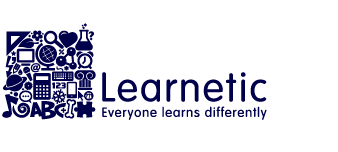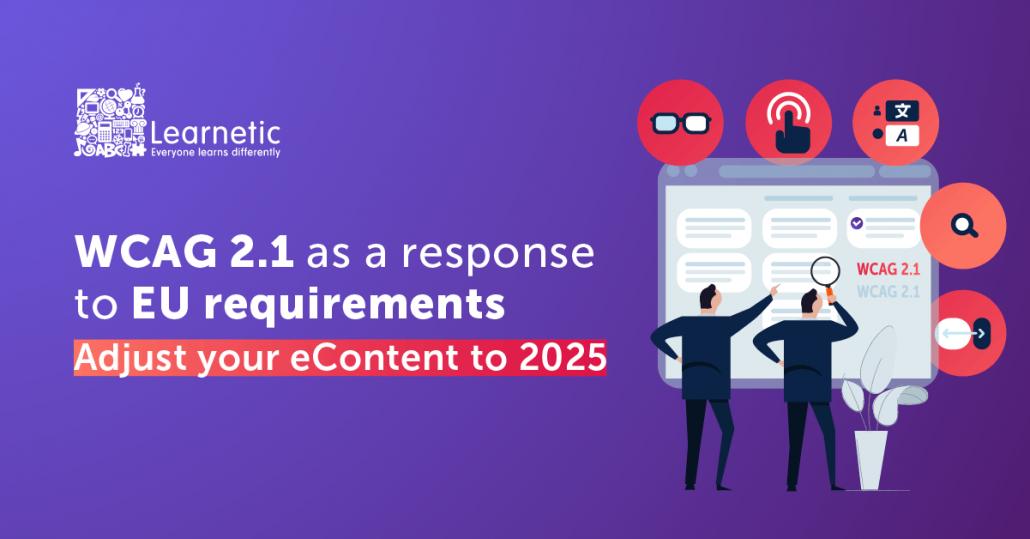Are publishers ready to have accessible (e.g. WCAG 2.1) eContent until 2025?
The European Accessibility Act (EAA) was published on June 28, 2019. EU member states must transpose the Directive’s provisions into national law by June 28, 2022. Within the next three years – up to June 28, 2025 – must have been implemented the requirements of the EAA. How will this affect educational publishers and WCAG 2.1 implementation?
The main goal of EAA
Around 135 million people in Europe live with a disability. This number is set to increase in the future along with population aging. The implementation of the EAA has two main goals:
- It will ensure that persons with impairments and, in parallel, many older persons will benefit from a greater supply of accessible products and services. They will be able to participate more actively in society.
- Unified rules will improve the functioning of the internal market for accessible products and services by removing barriers created by divergent legislation.
EAA with world standards
The European Accessibility Act is a derivative of the world-accepted standards. It reflects the obligations of the United Nations Convention on the Rights of Persons with Disabilities (UN CRPD), which was ratified by the EU and most of the UN Member States. The European Commission created a legislative framework for accessibility in line with Article 9 of the Convention. Accessibility is considered a broad concept that includes preventing and eliminating obstacles that pose problems for persons with impairments.
The general requirements of the European Accessibility Act
The EEA adds impetus to improving the accessibility of products and services in a single market. Among the range of products, the directive will cover, among others: audiovisual media services, e-books and e-commerce.
The Directive will indicate what is needed to be accessible (in terms of functional requirements) but does not state detailed technical solutions for making products accessible. It gives a gateway to the implementation of innovative solutions.
As stated by the European Commission’s fact sheet, the EAA:
- uses a set of common accessibility requirements at the EU level for a number of products and services (like WCAG 2.1)
- creates an obligation for the Member States to ensure that the selected products and
services placed in the market comply with accessibility requirements - uses the same accessibility requirements to define the accessibility obligation laid
down in existing EU law, in particular in the areas of public procurement, Structural & Investment Funds and transport - supports Member States’ implementation of the UN Convention on the Rights of Persons with Disabilities
- ensures that all products and services complying with accessibility requirements will circulate freely in the internal market
EEA does not:
- prescribe to the level of technical details on how to render a product or service accessible. However, it provides for the development of standards or technical implementation measures wherever more detail is needed
- set obligations for all manufacturers and service providers, but only for those working on a selected list of products and services
- impose burdensome requirements by providing safeguards on the disproportionate burden and fundamental alteration
- amend existing EU sectorial legislation on accessibility
The EAA contains exceptions for older content and “micro-businesses” with fewer than ten employees.
Is the EU Directive consistent with WCAG 2.1?
Web Content Accessibility Guidelines (WCAG) and its newest version WCAG 2.1 provide a global set of website accessibility guidelines to make digital content accessible to people with special educational needs. The EAA is based on WCAG’s four principles of accessibility of websites and mobile applications:
- perceivability – information and user interface components must be presentable to users in ways they can perceive;
- operability – user interface components and navigation must be operable;
- understandability – information and the operation of the user interface must be understandable;
- robustness – content must be robust enough to be interpreted reliably by various user agents, including assistive technologies.
Those principles are relevant to the European Accessibility Act. [EAA p. 7]
What does this mean for educational publishers and WCAG 2.1?
Even waiting for the results of the implementation of EAA at the national level, the implementation of the newest WCAG 2.1 is inevitable. The Directive underlines in general, that access to audiovisual content or e-book files should allow users with disabilities to use their assistive technologies. All products shall comply with the accessibility requirements set out in Section I of Annex I (p. 31-33), which are reflected in the WCAG.
If you have any questions regarding the way of creating WCAG 2.1 content or implementation of EAA requirements into your current or new products, feel free to contact:





